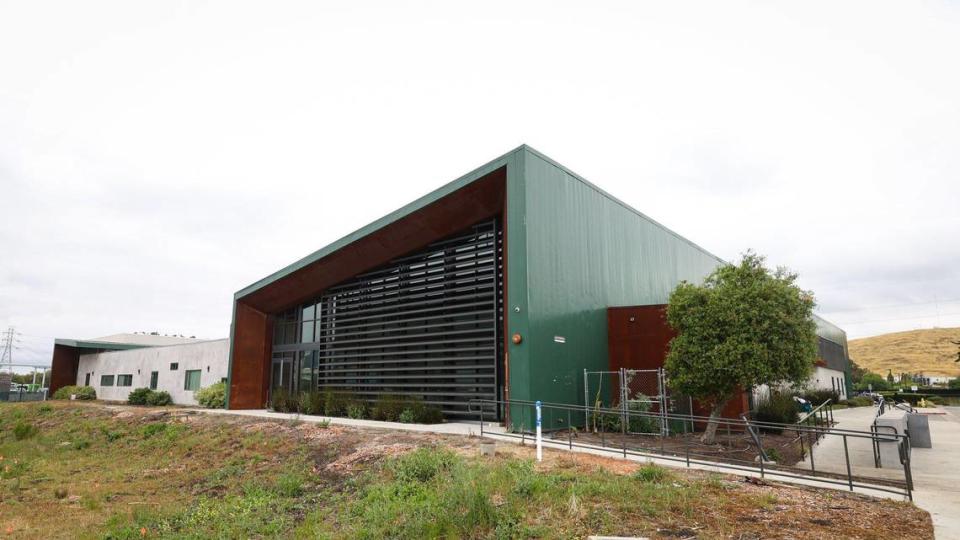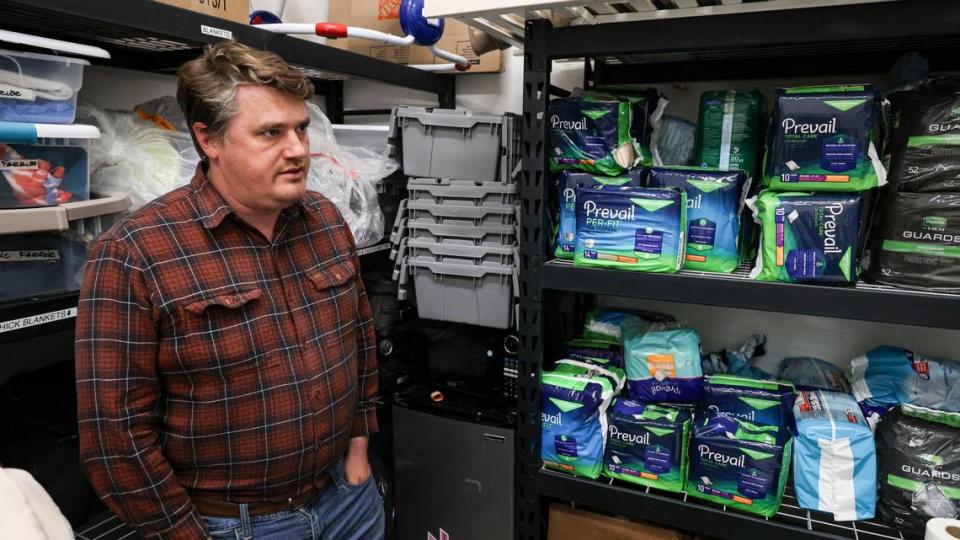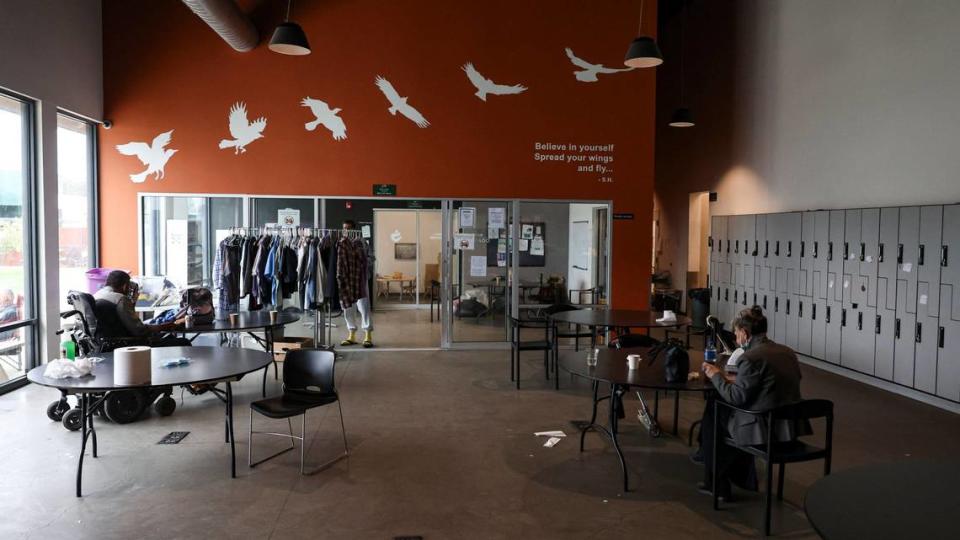‘A small peace of mind’: How is SLO homeless shelter’s new 90-day model working?
Around a year ago, San Luis Obispo’s sole shelter for homeless residents made a big change to its housing policy — and according to the shelter’s operators, the change has been worth it.
After five years of operating as a walk-up overnight shelter that featured services during the day, last summer 40 Prado Homeless Services Center made the switch to a transitional housing model for its clients, which increased focus on connection to housing and limited stays to 90 consecutive days.
Community Action Partnership of San Luis Obispo homeless services director Jack Lahey said since fully debuting at the start of September, the Housing Focused Shelter Program has proved to be a more efficient model for sheltering people and making sure their stays actually result in housing.
Lahey said compared to the previous method of sheltering people — which relied on giving beds to clients engaged with case managers and using a lottery to determine which walk-ins would get a bed — the new system is already yielding improvements.
“When each person comes into shelter, yes, universally, they all need shelter — that’s why they’re here — but we’re finding that we can really address diversity of need now,” Lahey said. “We’re finding that we’re getting to know people a lot better, and we’re able to tailor our services a lot better toward the people that we’re serving.”
The Tribune took a look at how the program has functioned over the past eight months as part of its Reality Check series.

What do homeless shelter residents think of housing focused model?
A 26-year-old client currently enrolled in the Housing Focused Shelter Program who requested anonymity due to privacy concerns told The Tribune the program has given him the stability he’s needed to get his life pointed in the right direction after being released from jail.
The client said he was released from jail Oct. 31, and found himself without a place to go in San Luis Obispo County.
Arriving at 40 Prado Nov. 2, he completed an intake and was placed on the wait list to be selected for the Housing Focused Shelter Program. By Nov. 5, a bed was guaranteed and he started working with his case manager on the three things he needed most: documentation and identification, employment support and housing navigation.
“It feels good — it’s a small peace of mind because I don’t have to worry about where I’m gonna set up my tent or having problems with the cops and rangers,” he said.
After more than six months in the program, he said he hasn’t yet been able to find a housing solution that fits his needs to stay in San Luis Obispo and be close to his parole officer. However, the stability he’s been provided has helped him keep his record clean, reducing his parole from three years to one and making it easier to hold his job of more than three months, he said.
He said he’s been able to keep his spot by continuing to work with his case manager routinely, waiting until housing can become a realistic option for him.
“I’m hoping to be out soon, but at the same time, I can’t really say if my application’s gonna go through, or if they’ll accept me or if I’m gonna get a call back,” he said.
Just a week after the client spoke with The Tribune, they were successfully placed in housing through the Housing Focused Shelter Program, Lahey told The Tribune.

Has the new model been effective?
This housing-focused approach has led to far more in-depth data collection on the needs of individual clients, allowing for a more individualized plan for each program participant and better documentation of where CAPSLO’s approach succeeds or fails, Lahey said.
Since launching Sept. 1, 115 households have been housed — including 86 since the start of 2024 — while 103 have been asked to leave the program in that time.
A household can be an individual client or a client and their family members, who would be housed together both in the shelter and eventually in housing together.
Comparing these outcomes to the previous shelter policy is difficult, Lahey said; housing results, length of stay and other metrics weren’t tracked at 40 Prado until the newer program was introduced.
Currently, 97 households are enrolled in the program, filling many of the 85 adult beds, 15-20 family room beds and 12 safe parking spots that the shelter has available.
As many as 10 beds may be available each night for referrals, high-risk individuals seeking shelter and the old lottery system, depending on the number of people using the Housing Focused Shelter Program beds, Lahey said.
Lahey said the program is better suited to resolving cases of chronic homelessness both within and outside of the shelter, helping longer-term clients move on from the shelter by providing a deadline to work on their housing situation and setting the expectation that shelter goes hand-in-hand with services for newer clients.

Most SLO County shelter beds now on 90-day models
In San Luis Obispo County, the 90-day shelter model has grown quickly in popularity in recent years.
With 40 Prado now operating under a 90-day model, almost every shelter bed in the county now comes with the expectation of interaction with case management and housing navigation.
The El Camino Homeless Organization’s Atascadero and Paso Robles shelters both made the switch to 90-day programming in 2021, while the 5Cities Homeless Coalition’s Cabins for Change programs launched with 90-day limits from the start in 2022 and 2024.
In its previous state, 40 Prado was more concerned with sheltering as many individuals each night as possible over finding housing outcomes for the people using its shelter space, Lahey said.
With the new program, they may be sheltering fewer households, “but we would be housing more households more efficiently,” Lahey said.
“That was the trade-off that we went with with this program, because it is a trade-of,” he said. “If we wanted to just purely shelter folks, we can do that, but we wanted to start giving a lot of depth to the programming.”


